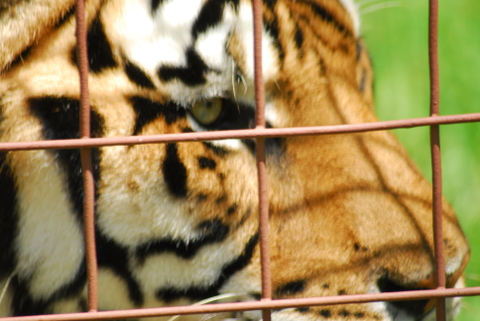Just as our own cats’ meows are distinctive enough for us to identify them, so too are tigers’ roars, according to the Prusten Project. The founder of the project, Courtney Dunn, says that they can hear the differences in tigers’ roars, and they wondered if software could see it, too. Apparently, it can, which is a major breakthrough in identifying individual tigers in the wild.
One key difference in tigers’ roars
The project looked at recordings of different tigers’ roars in zoos and sanctuaries around the U.S., and found that there are a number of differences. For instance, female tigers tend to have higher frequency roars than male tigers. Because of that, the researchers were able to tell which tigers’ roars came from a male, and which ones came from a female.
This actually is not terribly surprising, given the similarities between tigers and our own furry feline friends. My four cats have four very distinctive meows. As such, I can generally tell who’s meowing, even from all the way across the house, or on different floors.
Chase’s voice is unusually high-pitched for a male cat, and has an almost metallic timber to it. Kali’s voice is quieter, and more rich than her brother’s. Aria’s got a very high-pitched squeak that used to sound like she was singing, but we believe age has rusted her singing voice. Gizmo’s mew is a little lower-pitched, almost sad, and very smooth, despite her age.
Tigers and domestic cats share a lot of DNA, making the differences in tigers’ roars seem natural
Genetic research shows that the domestic cat and the tiger diverged some ten million years ago. Tigers and domestic house cats share 95.6 percent of their DNA, making them strikingly similar despite all the obvious differences. I imagine that the reason we have trouble thinking about tigers’ roars as being unique from one another is because, compared to our own cats at home, we so rarely actually hear tigers’ roars.
Listen to your cats’ meows carefully. Chances are, you can already identify each of your cats by its meow. If you listened to tigers’ roars as carefully as the Prusten Project does, you might start to hear the differences, too. In the meantime, scientists are hoping to expand their research beyond zoos and sanctuaries, and into the wild. This has the potential to help with tracking individual tigers, which, in turn, can help with conservation efforts.


